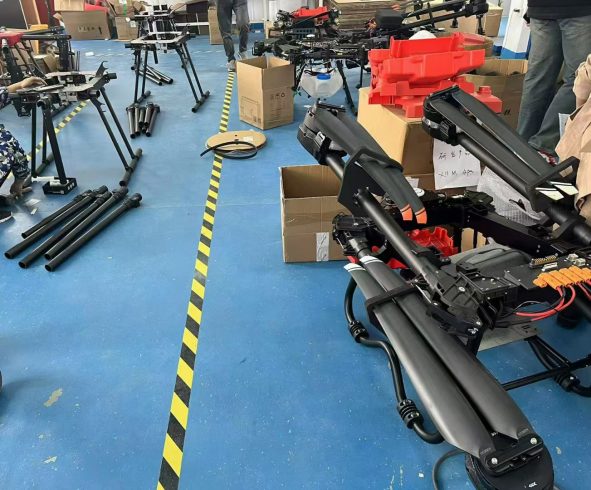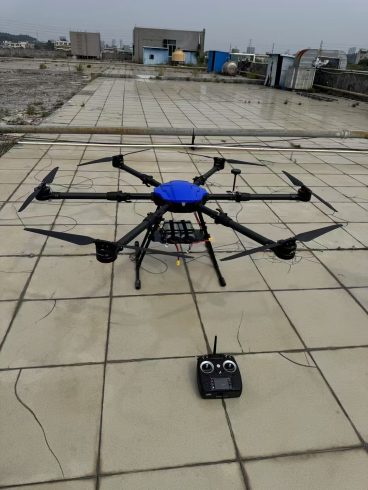![图片[1]-Top 10 Benefits of Drone Spraying in Modern Farming (And Why Farmers Are Switching)-msoen](https://www.msoen.com/wp-content/uploads/2025/04/0e151c96c1214759-768x1024.jpg)
As agriculture faces mounting pressure to increase productivity while reducing environmental impact, drone spraying has emerged as a game-changing innovation. Farmers worldwide are adopting this technology to tackle challenges like labor shortages, rising input costs, and climate volatility. In this article, we explore the science-backed benefits of drone spraying in farming and why it’s becoming indispensable for sustainable agriculture.
- Unmatched Precision in Chemical Application
Drone spraying leverages AI-powered precision to revolutionize crop treatment:
- Micro-Targeting: Drones equipped with multispectral sensors identify pest hotspots or nutrient-deficient zones, applying chemicals only where needed. Studies show this reduces pesticide use by 50–70% compared to traditional blanket spraying.
- Uniform Coverage: Ultrasonic nozzles adjust droplet size (30–150 microns) in real time based on wind and humidity, achieving 95%+ coverage accuracy.
- Dramatic Cost Savings
The economic case for drone spraying is compelling:
- Lower Chemical Costs: Targeted spraying cuts herbicide/pesticide expenses by $30–$50 per acre in row crops like corn and soybeans.
- Reduced Labor Needs: One operator can manage drones across 500+ acres, slashing labor costs by 60–80%.
- Minimal Equipment Wear: Lightweight drones eliminate fuel and maintenance costs associated with tractors or planes.
- Access to Challenging Terrain
Drones overcome traditional spraying limitations:
- Steep Slopes: Safely treat vineyards on 30°+ inclines where tractors can’t operate.
- Wet Fields: Spray flooded rice paddies without compacting soil.
- Fragile Crops: Navigate delicate strawberry fields or orchards without damaging plants.
- Enhanced Environmental Sustainability
Drone spraying aligns with regenerative farming goals:
- Reduced Runoff: Precision application decreases chemical leaching into waterways by 90% (University of Nebraska research).
- Lower Carbon Footprint: Electric drones emit 98% less CO₂ per acre than diesel-powered sprayers.
- Protection of Beneficial Insects: Avoids indiscriminate pesticide use that harms pollinators.
- Real-Time Data Integration
Modern spraying drones double as data collection tools:
- Post-Spray Analytics: Multispectral cameras verify chemical distribution and plant absorption.
- Historical Tracking: Compare spray maps across seasons to optimize future treatments.
- Regulatory Compliance: Generate audit-ready reports for organic certification or chemical usage.
- Faster Response to Threats
Drones enable rapid defense against emerging risks:
- Disease Outbreaks: Detect and treat fungal infections like wheat rust within 24 hours of symptom onset.
- Invasive Species: Contain locust swarms or fall armyworms before they spread.
- Weather Windows: Capitalize on brief calm periods between rains for timely spraying.
- Scalability for All Farm Sizes
From smallholders to industrial farms, drones adapt:
- 5-Acre Specialty Crops: Affordable mini-drones for organic vegetable growers.
- 10,000-Acre Estates: Autonomous swarms treating 500 acres/day.
- Custom Payloads: Switch between liquid chemicals, granular fertilizers, or bio-controls like trichogramma wasps.
- Improved Operator Safety
Drones eliminate exposure risks associated with:
- Toxic Chemicals: No direct contact during mixing or spraying.
- Rollover Hazards: Steep terrain accidents account for 23% of farm fatalities (OSHA).
- Heat Stress: Remote operation from climate-controlled offices.
- Compliance with Global Standards
Advanced drones meet stringent regulations:
- EU Farm to Fork: Achieve 50% chemical reduction targets.
- USDA Organic: Document precise inputs for certification.
- ISO 14001: Support environmental management systems.
- Future-Proofing Through Tech Integration
Drone spraying systems are evolving with:
- 5G Connectivity: Real-time collaboration between drones and IoT soil sensors.
- Blockchain Traceability: Immutable spray records for premium crop marketing.
- Swarm AI: 100+ drones autonomously coordinating over 10,000-acre farms.
Challenges & Solutions
While drone spraying offers immense benefits, farmers should consider:
- Initial Investment: Entry-level drones start at $3,000–$5,000. Solution: Leasing programs and USDA grants.
- Regulatory Training: FAA Part 107 certification required in the US. Solution: Vendor-provided courses.
- Battery Limits: 20–30 minute flight times. Solution: Swappable batteries and solar charging hubs.
Conclusion: Why the Future of Crop Spraying Is in the Skies
Drone spraying isn’t just an upgrade—it’s a paradigm shift. By combining precision, sustainability, and cost-efficiency, this technology empowers farmers to meet rising food demands while protecting ecosystems.
Ready to Elevate Your Farm?
➔ Download our free Drone Spraying ROI Calculator to estimate your savings.
➔ Explore our Beginner’s Guide to Precision Spraying for implementation tips.











暂无评论内容